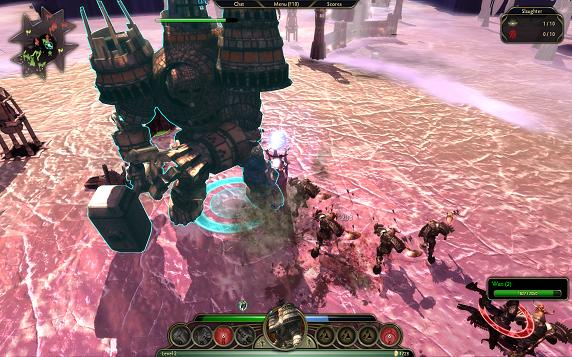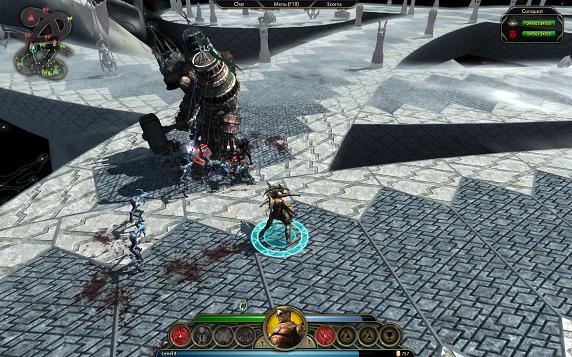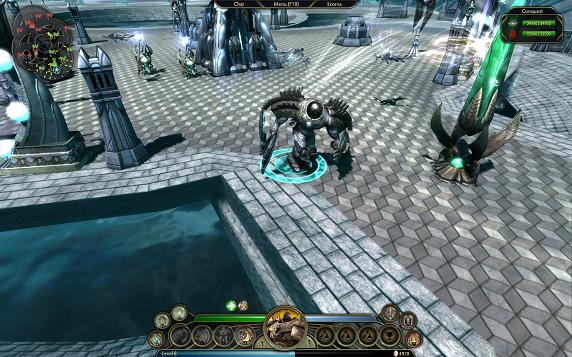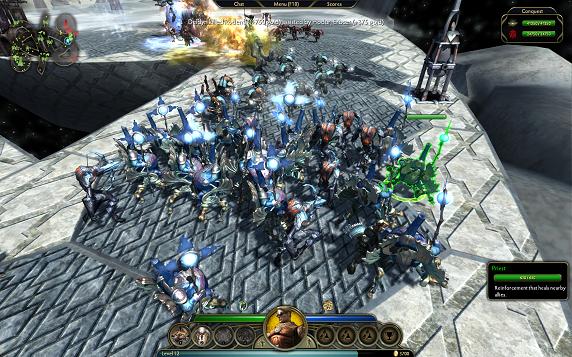
As a gamer, one way to tell when you’re getting old is when you hear all the kids talk about some cool new game but you have absolutely no idea what it’s all about. I’m referring to Defense of the Ancients here, a Warcraft 3 mod that has since taken on a life of its own, far outstripping the base game in popularity. It’s so ubiquitous that it’s considered a must-have game in Malaysian cybercafes. Since the original DotA was a mod and not a commercial release, various companies have tried to mine this new genre and one of the first of such attempts to be released was last year’s Demigod.
Many veteran gamers, me included, were dismissive of DotA when it first appeared, calling it an RTS in which you control a single unit and a click-fest. It didn’t help that the multi-player community around it was composed mostly of rude adolescents who were only too ready to dish out profanities to any noobs trying the game for the first time. The point of Demigod was to deliver the gaming goodness of DotA in a commercial release with high production values and hopefully attract a more mature community. After all, it should be noted that one reason why DotA became so successful was because it is free.
Demigod ended up being a commercial failure however, which explains why I was able to buy it for just US$5. I don’t want to spend too much time dwelling on why it failed. Suffice to say that it has a far smaller selection of characters and items compared to its predecessor and the fact that the multi-player netcode was borked for weeks after its release didn’t help. Real-time multi-player games aren’t generally my thing so this wasn’t originally on my radar at all, but the cheap price was too good to pass up so I bought it to check out what all the fuss is about.

In case there are still people out there who haven’t been exposed to DotA yet, this is a game in which the players are divided into two teams and each player selects a character, called a demigod here. Each side has a base on the map, protected by multiple layers of turrets, and AI-controlled basic troops will periodically spawn from each base to automatically attack the opposing one. The demigods then try to help their troops by taking on the enemy towers and creeps, tangling with enemy demigods who try to do the same. The map is also littered with various flags that confer various bonuses to whichever side that control them, which is done by having one or more demigods stand next to one.
Demigod features a total of ten characters to choose from (compared to nearly a hundred in DotA) who are divided into assassins and generals. General-type demigods tend to have minions around them and have abilities that are synergistic with minions and other demigods on your side while assassins work alone and specialize at killing enemy demigods. One good point in this game’s favor is that all of the various demigods are nicely differentiated from one another with specific roles and niches whereas the huge variety in DotA leads to all the options blending together and makes it very hard to learn. The character designs and general art direction in Demigod look pretty unique as well.
For example, Regulus, an assassin-type demigod, looks like an angel armed with a crossbow and specializes in long-ranged sniping. Another assassin-type, the Rook, who is the poster boy for the game, looks like a giant walking castle complete with turrets on his shoulders that can independently attack enemies in range. With the ability to lay down towers and to consume structures for health, he’s great at quickly demolishing enemy fortifications. You also have Lord Erebus, a general who can convert troops into vampiric minions when they die and can turn into a mist-like form to escape danger while still draining health from enemies.

Demigods gain levels and money by killing enemies and capturing flags. Levels increase your demigod’s basic stats but more importantly give you points to spend on special abilities. Gold can be spent either on purchasing items to equip your demigod with or improving your own base, which includes making all of the buildings on your side tougher and adding advanced units to the AI-controlled troops that spawn periodically. Understanding the various abilities available to the demigods and the selection of items is vital to playing well. Not only do you need to select abilities and items to fit your preferred playing style and role on your team, but you also need to be aware of what builds the enemy demigods are going for, and adjust your own build to counter them.
As a team-based game naturally Demigod can be expected to really shine only in multi-player but I didn’t have the patience to try that out. Still, it’s not bad in single-player mode, and the AI can be pretty brutal once you bump the difficulty mode up. It can be frustrating sometimes when you see the AI demigods on your team just stand around and do nothing, but in general they play well enough. I can definitely see that there’s a lot of room for different levels of skill in multiplayer games. There are lots of little things to learn, such as farming enemy troops quickly gain levels and money, knowing when it’s appropriate to engage enemy demigods and when to avoid them, teleporting around the map to capture flags and using the flag locking item to prevent enemy demigods from being able to get them back for a period of time etc.
Anyway while I did enjoy the short time that I spent trying this game, my experience only confirms my initial assessment that this sort of thing isn’t my cup of tea. It relies a bit too heavily on forcing players to memorize builds and abilities as well as the hard counters needed to stop them, all in the heat of a real-time strategy game. I was never much good at RTS games of any stripe anyway, as old-fashioned turn-based games are more up my alley, so I’m not inclined to learn this properly. I do see how it might appeal to many people though, especially since matches are relatively short, probably lasting between twenty minutes and forty five minutes. The main obstacle potential buyers will have is that since this game never really took off, its multi-player community isn’t large enough so you’ll have a hard time finding people online to play it with. This means unless you’re willing to be satisfied just with the single-player mode like me, you’d be better off either sticking with DotA or trying one of the other clones.

Leave a Reply